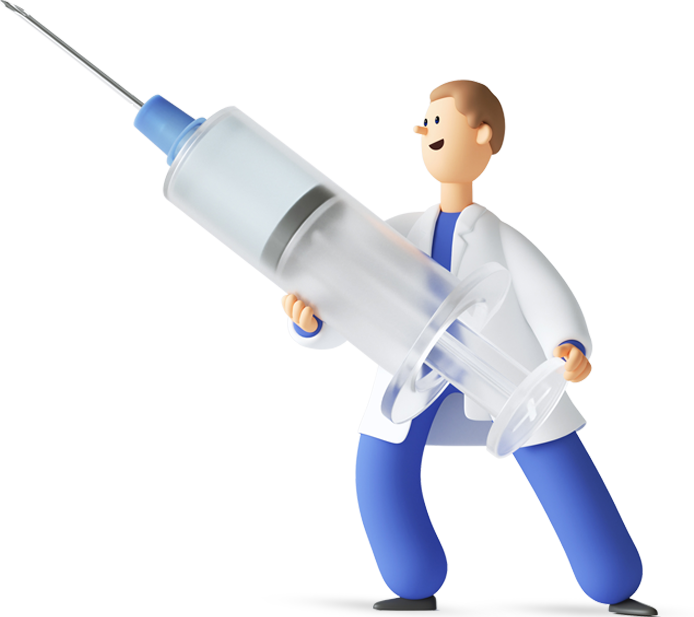
Facial Paralysis Treatment: Improvement of Facial Muscles
Facial paralysis is a condition that causes loss of facial expression as a result of temporary or permanent weakening or paralysis of the facial muscles. Generally, there is a loss of movement in the facial muscles due to damage to the facial nerve (facial nerve). Facial paralysis can cause not only aesthetic but also functional problems. This can make activities of daily living such as eating, speaking and protecting the eyes difficult.
Treatment of facial paralysis requires a personalised approach. Treatment may differ depending on the severity and cause of the paralysis and the general health status of the patient. Early diagnosis and intervention can accelerate the recovery process of patients, so medical help should be sought as soon as the symptoms of facial paralysis are noticed.
Facial Paralysis Causes
Facial paralysis can have many different causes. Some of the most common causes are:
Bell's Paralysis It is a nerve disease of unknown origin that usually causes unilateral facial paralysis.
Traumas and Injuries: Blows to the head or face can cause paralysis by damaging the facial nerve.
Infections Especially viral infections (e.g. herpes zoster) can cause facial paralysis.
Stroke Weakening of the facial muscles may occur as a result of obstruction of blood flow in the brain.
Tumours Tumours around the facial nerves can cause paralysis.
Nerve Impingement Other medical conditions can lead to compression of the facial nerve, causing paralysis.

Facial Paralysis Treatment Methods
Treatment of facial paralysis varies according to the type and severity of the paralysis and the patient's condition. Here are common treatment options:
1. Drug Therapy
Steroid medications are commonly used in the treatment of facial paralysis, especially in paralysis caused by viral infections or inflammation. These drugs can speed up the healing process by reducing nerve inflammation.
2. Physical Therapy
Physical therapy can help strengthen the facial muscles. After facial paralysis, special exercises can be applied to re-mobilise the paralysed muscles. Physical therapy promotes functional recovery by increasing the flexibility of the muscles.
3. Surgical Intervention
Sometimes facial paralysis may require surgical intervention. Surgical intervention may be required especially in nerve damage caused by trauma or paralysis caused by tumours. These interventions can help to solve the problem that causes paralysis.
4. Botox Treatment
Botox can help correct asymmetry caused by facial paralysis by preventing excessive contraction of facial muscles. Botox is generally used for aesthetic correction in the treatment of facial paralysis and is a temporary treatment option.
5. Electrical Stimulation Therapy
In the treatment of facial paralysis, the muscles can be stimulated using devices that send electrical impulses to the facial muscles. This treatment can help the muscles to regain strength and recover.
6. Facial Paralysis Rehabilitation
Rehabilitation for facial paralysis includes a range of treatment methods to strengthen muscles, heal nerves and restore overall facial function. The therapy process is planned individually.
Facial Paralysis Recovery Process After Treatment
The recovery time of facial paralysis treatment depends on the type of paralysis, its severity and the treatment methods applied. While some conditions such as Bell's Palsy can recover within a few weeks, the recovery process for more complex paralyses can take several months. Patience is required for the facial muscles to start working again and regular follow-up of the patients during the treatment process is important.

Frequently Asked Questions
How long does the treatment of facial paralysis last?
The duration of facial paralysis treatment varies depending on the type of paralysis and the response to treatment. In simple cases, recovery can be achieved within a few weeks, but more serious conditions can take months.
Is facial paralysis completely cured?
Some cases of facial paralysis can be completely cured. Especially in cases such as Bell's palsy, facial functions can return with treatment. However, in some severe cases, permanent damage may occur.
What is the most common cause of facial paralysis?
One of the most common causes is Bell's palsy, which leads to unilateral facial paralysis. Traumas, infections and stroke are also common causes.
Does facial paralysis require surgical intervention?
Facial paralysis does not always require surgical intervention. Most patients can recover with medication and physical therapy. However, conditions such as traumas or tumours may require surgical intervention.
Which methods are used in the treatment of facial paralysis?
Treatment depends on the severity of the paralysis. Steroid medication, physical therapy, botox treatment, electrical stimulation and surgical interventions are the most common treatment options.
Is facial paralysis temporary?
Facial paralysis can often be temporary, but in some cases it can lead to permanent damage. Early treatment increases the chances of recovery.
What does botox treatment for facial paralysis do?
Botox treatment is used to correct asymmetry caused by facial paralysis. By preventing excessive contraction of facial muscles, it helps facial expression to be more symmetrical.











